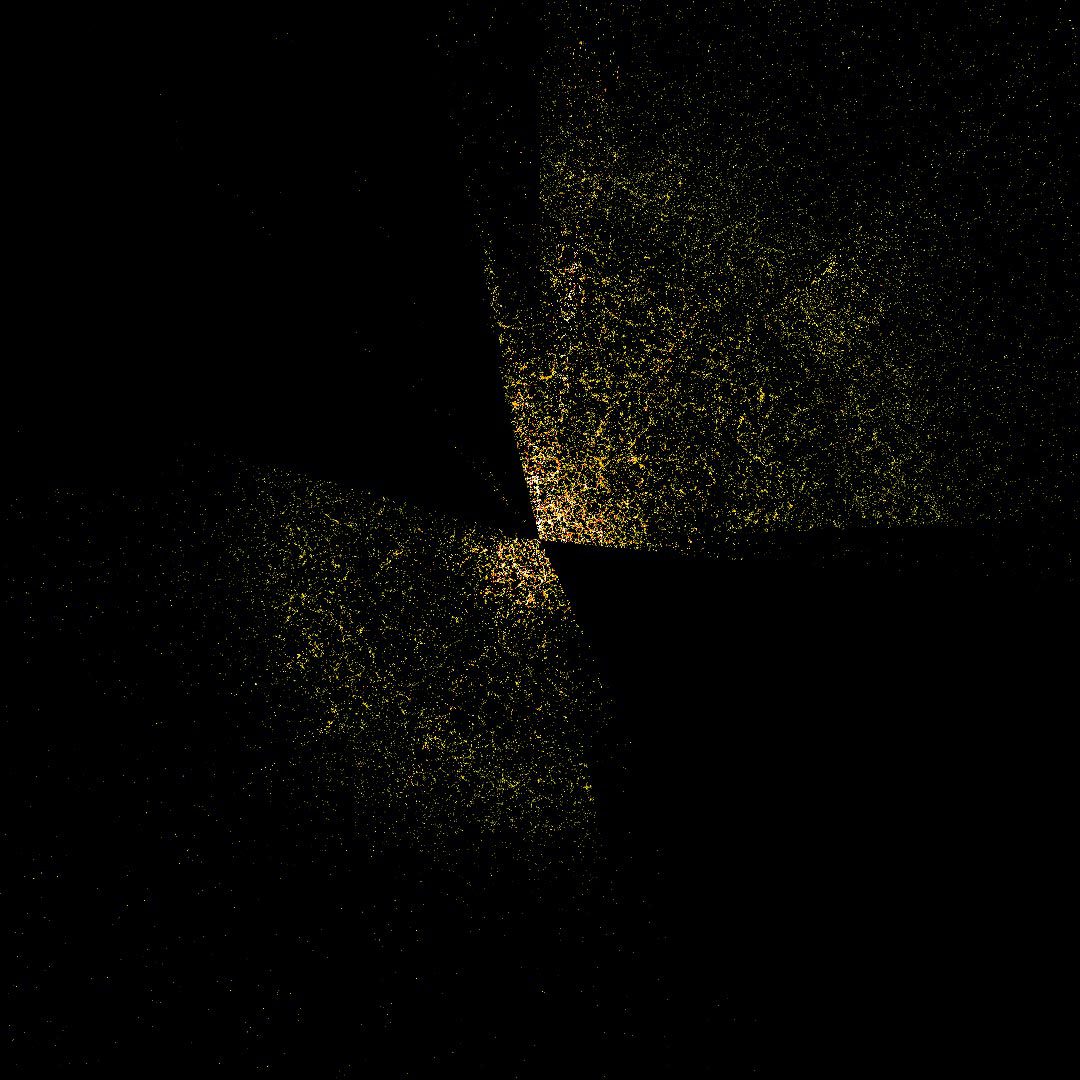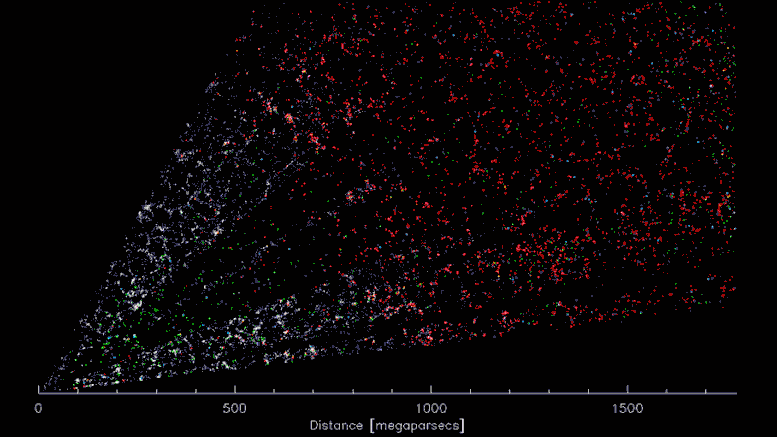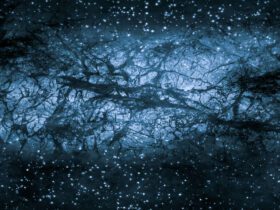The Dark Energy Spectroscopic Instrument (DESI) has finished its first seven months of surveying by shattering all previous records for three-dimensional galaxy surveys, generating the most extensive and most comprehensive picture of the cosmos ever created.
Despite this, it is just roughly 10% of the way through its five-year goal.
Once finished, that astonishingly accurate 3D map will provide a better knowledge of dark energy, giving physicists and astronomers a better comprehension of the universe’s history – and future.
Meanwhile, the survey’s outstanding technical performance and truly cosmic accomplishments so far are assisting scientists in uncovering the mysteries of the universe’s most powerful light sources.
DESI is a multinational research partnership overseen by the Department of Energy’s Lawrence Berkeley National Laboratory (Berkeley Lab), with significant financing from the DOE’s Office of Science for construction and operations.
This week, DESI scientists will describe the instrument’s performance and some early astrophysical discoveries during a CosmoPalooza webinar sponsored by Berkeley Lab, including updates from other top cosmology studies.
Berkeley Lab scientist Julien Guy remarked there’s a lot of beauty to it, in the massive clusters, filaments, and voids in the distribution of galaxies in the 3D map, also the universe’s most prominent structures. Inside them lies an imprint of the very early cosmos, as well as the history of its growth since then.

DESI has gone a long way to get here. The instrument was first envisioned over a decade ago, began building in 2015.
It was erected at the Kitt Peak National Observatory’s Nicholas U. Mayall 4-meter telescope in Tucson, Arizona.
Kitt Peak National Observatory is a program of the National Science Foundation’s (NSF) NOIRLab, with whom the DOE has a contract to run the Mayall Telescope for the DESI survey.
The instrument made its debut appearance in late 2019.
Then, the coronavirus pandemic struck during its validation phase, forcing the telescope to be shut down for many months, albeit some work was done remotely.
DESI returned to the sky in December 2020 to test its hardware and software, and by May 2021, it was ready to begin its scientific survey.

However, development on DESI did not stop after the survey began. Physicist Klaus Honscheid of Ohio State University, the project’s co-Instrument Scientist, stated it takes a lot of labor to make this instrument operate.
Honscheid and his colleagues guarantee that the device operates smoothly and automatically, preferably without human intervention throughout a night’s observation. He added that the most common criticism he receives from the night observers is that the shifts are boring, which he considers a compliment.
However, constant productivity requires very thorough supervision over each of the 5000 cutting-edge robots that install optical fibers on the DESI apparatus, ensuring their locations are correct to within 10 microns. Ten microns is just about the thickness of human hair.
And each robot must be positioned to capture light from galaxies billions of light-years distant.
Seeing The Actual Hues of Dark Energy
That degree of precision is required to complete the survey’s principal goal of capturing comprehensive color spectrum photographs of millions of galaxies spanning more than a third of the sky.
DESI can detect how much light has been redshifted – stretched out toward the red end of the spectrum by expanding the cosmos over the billions of years it traveled before reaching Earth – by breaking down the light from each galaxy into its spectrum of colors.
These redshifts allow DESI to perceive the depth of the sky.
In general, the more redshifted a galaxy’s spectrum is, the more distant it is.
Physicists may trace clusters and superclusters of galaxies using a 3D map of the universe.
Those structures had echoes of their birth when they were mere ripples in the nascent universe.
Physicists may utilize DESI data to calculate the expansion history of the cosmos by separating those echoes.
Guy said that the scientific objective is to quantify the fingerprint of waves in primeval plasma and identify the impact of these waves billions of years later, and so early in our survey.
Understanding the expansion history is critical since the destiny of the whole universe is at risk.
Today, dark energy accounts for around 70% of the universe’s material, a mysterious source of energy that accelerates the universe’s expansion.
As the cosmos expands, more dark energy appears, which accelerates the expansion even more, in a loop that drives the proportion of dark energy in the universe ever higher.
Dark energy will eventually decide the fate of the universe: will it continue to grow indefinitely?
Will it fall back on itself, like a Big Bang in reverse?
Will it rip itself apart?
Answering these issues requires understanding how dark energy has behaved in the past, which is precisely what DESI aims to achieve.
Cosmologists may test Einstein’s theory of general relativity across these vast expanses of space and time by comparing the expansion history with the growth history.
Bright Galaxies and Black Holes
Understanding the destiny of the universe, on the other hand, will have to wait till DESI completes more of its survey.
Meanwhile, DESI is already advancing our knowledge of the distant past, more than 10 billion years ago, when galaxies were yet in their infancy.
Ragadeepika Pucha, an astronomy graduate student at the University of Arizona who works on DESI, said DESI would provide us with incredible information about galaxy creation and development mechanics.
Pucha and her colleagues are studying the behavior of intermediate-mass black holes in tiny galaxies using DESI data.
Massive black holes are thought to exist at the centers of virtually all giant galaxies, including our own Milky Way.
However, it is unknown if tiny galaxies always have their own (smaller) black holes at their centers.
Black holes may be difficult to locate on their own, but they become more straightforward to locate if they attract enough material.
An active galactic nucleus (AGN) is generated when gas, dust, and other material falling into a black hole warms up (to temperatures hotter than the center of a star) on its journey in.
AGNs are among the most glowing objects in the known cosmos in giant galaxies.
AGNs in smaller galaxies, on the other hand, may be considerably fainter and more difficult to differentiate from young stars.
DESI’s spectra may help address this challenge, and its extensive coverage of the sky will reveal more information on the centers of tiny galaxies than ever before.
These cores, in turn, will provide scientists with information on how brilliant AGNs evolved in the early cosmos.
Quasars, brilliant galaxies, are among the brightest and most distant objects known. Victoria Fawcett, a Ph.D. student in astronomy at Durham University in the United Kingdom, said that she thinks of them as lampposts, peering back in time into the history of the universe. Because of their immense strength, quasars are excellent probes of the early cosmos; DESI’s data will stretch back 11 billion years.
Fawcett and her colleagues are studying the development of quasars using DESI data.
It is assumed that quasars begin with an envelope of dust, which reddens the light they emit, similar to how the sun shines through haze. As they mature, they shed this dust and become bluer.
However, it has been difficult to validate this notion because of a lack of evidence on red quasars.
DESI is altering that by discovering more quasars than any previous study, with an estimated 2.4 million quasars in the final survey data.
Fawcett added that DESI picks up considerably fainter and redder things.
This enables scientists to test concepts regarding quasar evolution that could not previously be evaluated. Also, this isn’t restricted to quasars.
The team of scientists discovered a lot of strange systems, including huge samples of unique items that we’ve never been able to analyze in-depth before.
More is on the way for DESI. The study has now cataloged over 7.5 million galaxies and continues to add more at a pace of over a million each month.
DESI cataloged redshifts from 2.5 million galaxies in November 2021 alone.
DESI is predicted to have about 35 million galaxies in its catalog by the conclusion of its operation in 2026, allowing for a wide range of cosmology and astrophysics study.












Leave a Reply